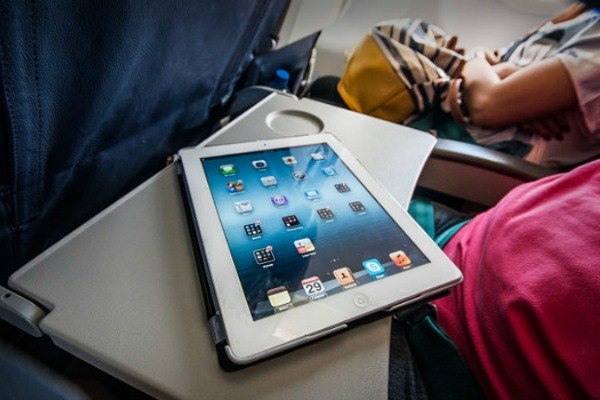Long-haul flights are one of the trickiest things a person can put themselves through in order to enjoy a holiday or a meeting in a far-flung destination, and with most airlines offering to traverse the world, it’s never been easier for globetrotting. However, it can be especially hard to deal with everything that is manageable on a short flight, with extra duration – screaming kids, cramped legroom, being bored out of your mind, and shocking sleeping patterns to name but a few. It doesn’t make a nice start for what is hopefully a wonderful journey. So if you’re looking for some top tips for long-haul flights, then look no further. Check out our guide to surviving long haul flights down below…
- Get an aisle seat. One of the best tips for long-haul flights is to look at where you’re seated and to work out a plan. If possible, try and book an aisle seat in the middle trio of seats that usually make up the cabin layout for most airplanes and flights. These particular seats not only allow you the chance to stretch your legs out, but halve the chance of the person in the middle seat asking you to move so they can use the bathroom. Aisle seats in general are a good idea; they minimize the hassle and time it takes to reach the bathroom. Your seat on the plane can also help you out a lot. Most flights will offer the chance to pay for extra legroom and it’s worth taking them up on it if you’re a tall person and it is a flight longer than a couple of hours. Extra legroom means that you will probably seated closer to the front of the plane, with more room, which helps you feel more like a passenger and less like cattle.
- Prepare to be bored. One of the most prevalent problems to dealing with on a long-haul flight is that you will need to be entertained (unless you are one of those extremely rare people who have such a rich inner life that you never have the need for entertainment). Most flights have at least some element of entertainment built into their flights, whether it is an in-flight movie or a more comprehensive movie, music and television system as offered on some major airlines. However, it’s always best to make sure you have your own entertainment. Remember that flights do allow some electronic devices – such as music players and games consoles, as well as tablets, laptops and cell phones as along as the WiFi is turned off – so feel free to pack a couple of them. It’s also worth bringing a book or two, a couple of magazines for variety, and even a travel sized game if you’re travelling with children. Most importantly, remember to pack stuff that will not bore you to tears within half an hour or so; even if you have in-flight entertainment, there will be times when you want to do something else.
- Try to eat well, stay hydrated and stay healthy. Most people assume that it’s absolutely safe and healthy and fine to be travelling on planes – and they’re right. However, there’s no accounting for how many kinds of germs and bugs can be circulating around, thanks to people being stuck together in a metal tube for several hours together. In order to minimise your chance of falling ill with a flu or cold, always make sure you have plenty of Emergen-C in your bag as well as santising wipes and cleansers for your hands, face, and your seat as well to ensure no germs get transferred. One of the most useful tips for long-haul flights concerns the food served on airplanes; if it’s possible, when booking, make sure you order a kosher, halal or a vegetarian meal if they are available. These meals are at a much higher chance of being prepared fresh and therefore not only will probably taste better, but also be fresher and healthier. Another useful tip is to keep your fluid intake; if you can buy big bottles of water at the airport duty-free before you board, do so as it’ll not only save you a bit of money, keeping hydrated helps keep stuff like headaches and the chance of colds and flu at bay. It also helps keep your kidneys healthy and to flush your body’s toxins.
- Make sure you keep moving. One of the biggest threats to people on planes is a lack of movement and exercise. Deep-vein thrombosis is a horrible, potentially life-threatening condition that mostly develops on planes due to blood clots developing in the veins of legs of people who stay in their seats for hours and hours at a time – hence the prominence of them on plane passengers. Fortunately, however, you can severely minimize your risk to developing DVT by following one of the best tips for long haul flights and ensuring that every thirty minutes, you get up for a walk around the plane. Take your shoes off and walk around the cabin in your padded feet to help normal circulation return to your legs. Another good way to exercise on a plane – if there’s room, that is – is to do some stretches every hour or so. Simple back bends, leg stretches, toe touches, calf exercises and twists, are all effective ways to keep your body active, limber, and comfortable during a long-haul flight, as well as being free to view on health websites ahead of your flight. You might get some odd looks from fellow passengers on the flight, but you’ll feel better and infinitely healthier when you touch down.
- Get plenty of sleep. The most important advice to give and impart, and one of the most useful tips for long-haul flights: get plenty of sleep. Getting as much sleep as you can not only makes you feel a lot better, it’ll also fill in those empty hours and give your body a chance to recover from the internal stresses of crossing time zones, helping to eliminate jet lag somewhat. Make sure you pack plenty of home comforts – a neck pillow for those awkward sleeping positions, some sleeping tablets or Advil to help combat any pain that is inhabiting your chances of a good forty winks. Sleeping on a plane can also be aided by loading up specialized playlists onto your music player of choice; ambient music, lullabies, or whatever music is most conducive to your most relaxed, sleeping state, should be essential and always to hand. Your airline will plenty of blankets and pillows for long haul flights, and while we can’t promise there won’t be a snorer next to you, you can at least arm yourselves with the best tools to make sure you’re prepared for everything your long haul flight can throw at you.




